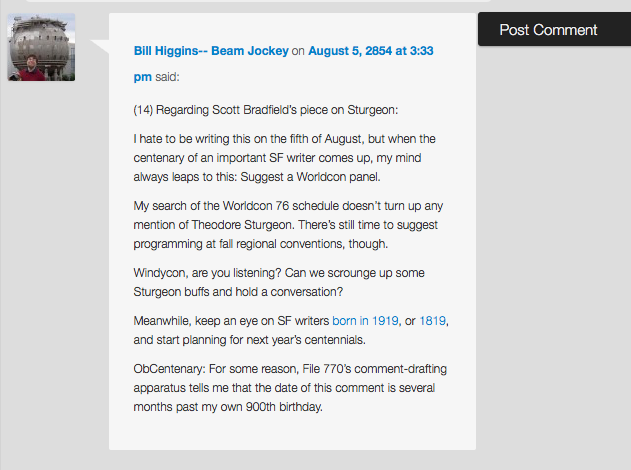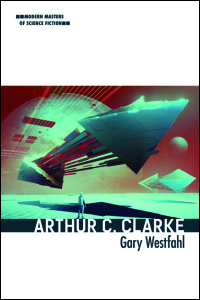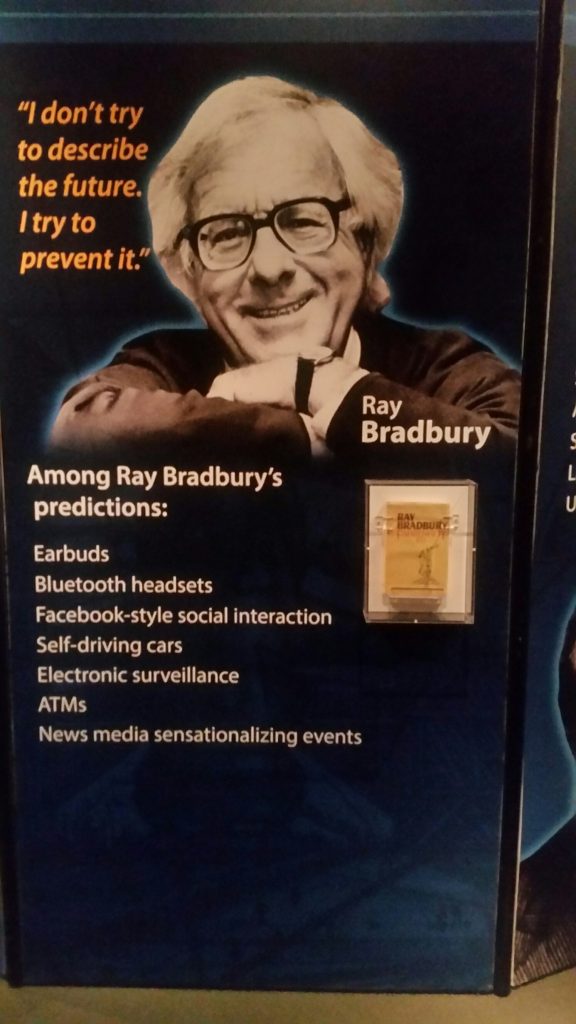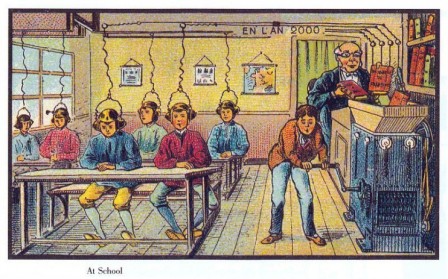








[Introduction: Gary Westfahl has authored, edited, or co-edited over thirty books about science fiction and fantasy, including the Hugo Award-nominated Science Fiction Quotations (2005) and the two-volume Science Fiction Literature through History: An Encyclopedia (2021). In 2003 he won the Science Fiction Research Association’s Pilgrim Award for his lifetime contributions to science fiction and fantasy scholarship.]
By Gary Westfahl: I am announcing a new science fiction award, the Westfahl Award. Unlike other awards, given to science fiction authors and works, this award will be given to other science fiction awards. Specifically, it will “honor” the most dubious and superfluous awards in this field.
Given the extreme proliferation of such awards, there will be no shortage of credible nominees.
The award’s other special feature is that, unlike other science fiction awards, it is not designed to encourage people to continue the fine work they have been doing; rather, in the tradition of Hollywood’s Razzie Awards, the hope is that the stigma of such an award might encourage some recipients to stop what they have doing – giving out questionable awards – and significantly reduce the number of such awards, to everyone’s benefit.
*****
In a sense, all these awards are superfluous, since authors effectively receive awards all the time, as a natural consequence of their careers. This is especially true of science fiction writers, since the strong community that grew up with the genre supports several mechanisms to honor the field’s popular writers. To list some of these natural awards: writers read letters in magazines and receive personal letters from fans praising their work; their stories are chosen to be republished in anthologies; they attend science fiction conventions to be greeted as honored guests and are asked to sign copies of their books; they are interviewed by major publications interested in their works; they are consulted by journalists seeking quotable comments on contemporary phenomena related to science fiction; their texts are analyzed by science fiction commentators and scholars; and publishers request that they provide blurbs praising other authors’ works, testifying to their own prominence as names readers will recognize and respect. Most significantly, they regularly receive checks for published stories and royalties from their books, and I would argue that these represent the most tangible and meaningful of all awards. In all these ways, then, authors are regularly informed that their writings are meritorious and appreciated, and they don’t need small statues or fancy certificates to confirm that is the case.
The question then becomes: if they aren’t really necessary, why are there so many awards, and why have these awards become so numerous that it now seems File 770 is announcing some new award every day? The answer is not that authors and their works require recognition, since as noted that is already occurring. In a few cases, such as the Arthur C. Clarke Award and the Endeavor Award, awards do provide funds that contribute to the authors’ income, so one can defend them as charities to support worthwhile writers; but almost all of the other awards for science fiction writers offer nothing more than some objects to place on their mantles or certificates to hang on their walls.
The real purpose of these awards, in virtually all cases, is nothing more than self-aggrandizement, an effort by organizations to draw more attention to themselves. Consider this situation: you have a science fiction society dedicated to a particular region, or particular subgenre; you publish fanzines, you stage annual conventions, you sponsor other activities, but you are distressed to realize that you are being entirely ignored by the larger science fiction community. So you have a brilliant idea: we’ll establish and give out annual awards! Some distinguished authors might show up to accept them at our conventions, increasing our attendance, and we can send announcements of our awards to science fiction websites, publicizing ourselves as well as our recently invented awards. And every time one organization implements this policy, it can inspire other organizations to do the same, each coming up with some category of science fiction to honor that is not precisely covered by all the other awards.
Whenever people read an announcement about yet another science fiction award, then, they must bear in mind one simple fact: the award is not primarily designed to honor the identified author or work; it is primarily designed to honor the organization bestowing the award. And this motivation constitutes one reason to dislike these awards – that they are disingenuous, emerging from motivations that have nothing to do with any genuine desire to honor meritorious authors and works.
A second reason to dislike these awards is the manner in which they are decided upon. Certain awards, prominently including the Hugo Awards and Nebula Awards, are determined by the votes of large numbers of presumably qualified readers, and therefore have some credibility; however, most awards I know of are decided upon by small committees that may or may not be making objective judgments about such matters. While I would prefer to not provide details, I was briefly involved in deciding upon the Eaton Awards and Milford Awards, announced at the annual J. Lloyd Eaton Conferences on Science Fiction and Fantasy Literature, once held at the University of California, Riverside. These respectively recognized the year’s outstanding critical work on science fiction and lifetime achievement in science fiction editing. (Later, the Eaton Awards honored lifetime achievements in writing science fiction, undoubtedly because the person then in heading the collection imagined that she could attract more publicity by honoring authors instead of scholars.) Clearly, then-conference coordinator George Slusser inaugurated these awards to draw attention to the Eaton Collection of Science Fiction and Fantasy Literature that he oversaw and associated conferences, and they have been duly recognized in compilations of science fiction awards.
However, the way that these awards were determined was never specified – and thus properly suspect. For the record, the Eaton Awards and Milford Awards were basically decided upon by Slusser himself, with some input from a few other colleagues. And his decisions were sometimes based on questionable considerations, and were subject to pressure by people with a personal interest in their outcome, raising the issue of why anyone should consider them significant. Now, I have no inside information on the processes that result in all the other awards now being received by science fiction texts and authors, but I would guess they are often the result of equally questionable negotiations among the few committee members who make the key decisions, and hence that the results are not necessarily based purely on merit.
As a third reason to be critical of certain awards, many are based on the premise that there exists a particular form of science fiction that requires special recognition, which usually is not the case. Consider the Philip K. Dick Award, established to honor each year’s best science fiction novel originally published as a paperback. Now, back in the 1950s, when Dick first began publishing, one could justify such an award, since the policy then was that major authors first published works as hardbacks, while minor authors first published works as paperbacks; thus, one could argue that the poor authors relegated to the paperback-first marketplace might be overlooked and thus demand a special award to honor their outstanding works. The problem is that there is absolutely no evidence in later decades that science fiction novels originally published as paperbacks have been ignored by other awards; indeed, three of the field’s most enduring classics – Ursula K. Le Guin’s The Left Hand of Darkness (1969), Larry Niven’s Ringworld (1970), and William Gibson’s Neuromancer (1984) – were all first published as paperbacks, yet this proved no barrier to their winning both the Hugo Award and Nebula Award. In addition, the rigid rules governing first publications are no longer enforced, as many major authors are happy to have their novels first appear as paperbacks, and further muddying the waters is that some publishers now publish books simultaneously as hardbacks – for libraries – and paperbacks – for the general public – not to mention the issues raised by print-on-demand books and ebooks which may first manifest themselves as physical objects as either hardbacks or paperbacks. In sum, there is no need for a special award for original paperback novels – yet the Philip K. Dick Award is destined to endure, as one device to draw attention to its sponsor, the Philadelphia Science Fiction Society.
Also open to criticism are the awards designed for writers who live in particular regions – such as the Endeavor Award, for writers in the Pacific Northwest, and the Manly Wade Wellman Award, for writers in North Carolina. Long ago, people tended to spend their entire lives in the places where they were born, and enjoyed only limited contact with other areas of the country; thus, there emerged in America, as recognized by scholars, distinctive regional literatures. But things are different today: thanks to modern media such as films, television, and the internet, everyone in America today effectively grows up in the milieu of a national culture, if not an international culture, and it is commonplace for people to move to different regions several times during their lifetime, further diminishing the influence of their surroundings at any particular time. It would be impossible, then, to argue that there exists some singular form of “North Carolina Science Fiction” that demands a special award; all one can say in defense of the Manly Wade Wellman Award is that it is a purely parochial gesture to celebrate writers who happen to live close to the organization that gives out the award and to celebrate the organization that awards it. But why should writers living in North Carolina be especially privileged to have an award just for them? What about the writers in the other forty-nine states? Doesn’t Paul Di Filippo deserve to be eligible for an award for writers currently living in Rhode Island?
As it happens, I recently received personal evidence undermining any defense of the Endeavour Award as a way to especially recognize the unique qualities of authors who inhabit the Pacific Northwest. For my Science Fiction Literature Through History: An Encyclopedia (2021), I interviewed among other writers Ted Chiang, resident of a Seattle suburb, and one of my original questions was, “Along with other noteworthy authors, including the late Ursula K. Le Guin and William Gibson, you have long lived in the Pacific Northwest region. In what ways has that environment influenced your writing?” Chiang advised me to substitute another question, since the only way he could respond to that question was “none that I’m aware of.” So much for the argument that living in the Pacific Northwest constitutes any meaningful influence on the science fiction of its authors.
I am also suspicious of all awards to works of science fiction that focus on particular issues, such as the Prometheus Award, annually given by the Libertarian Futurist Society to novels that especially promote libertarian ideals. The problem with such awards is simple: as anyone learns in literature classes, the very definition of superior novels is that they are characteristically devoted to multiple issues, in contrast to short stories that are typically centered on one particular issue. Thus, a novel that is so conspicuously focused on the topic of criticizing oppressive governments, to the exclusion of all other matters, as to attract the attention of judges determining awards is arguably not a successful novel, and hence not truly worthy of an award. In the case of the Prometheus Award, some widely praised novels have won the award, yet a number of other winners, which I will tactfully not name, have to put it mildly failed to receive widespread recognition as contemporary classics of science fiction.
For the record, I am not automatically opposed to all science fiction awards dedicated to particular categories of science fiction. I think the Scribe Awards – given to outstanding novels based on media franchises – perform a valuable service, since all such novels are invariably and automatically excluded from consideration for all other awards; and while I have no fondness for such works, I am sure that some works in the field are excellent, and others are not, and there should exist some way to recognize the best writers who specialize in this form of science fiction. It is, however, harder to argue that there exists any need to especially recognize works that first appear as paperbacks, or writers who happen to live in North Carolina.

Yet the final problem with all these awards is a principle that is unfortunately not understood by contemporary elementary school teachers – namely, that if you give everyone an award, it is equivalent to giving no one an award. Today there are, quite simply, too many awards being given out to science fiction authors and works, and each one unjustifiably but significantly diminishes the importance of such awards. A reader becomes numb while reading about all of them, so that they virtually have no impact at all. I mean, to mention one recent award, no one could possibly care less that Stephen Graham Jones’s The Only Good Indians (2020) won the Los Angeles Times’s Ray Bradbury Prize for Science Fiction, Fantasy, and Speculative Literature. All these spurious awards only diminish the significance of the few awards that actually mean anything, and they clutter websites with breaking news stories that in no way actually reflect the opinions of the larger science fiction community or the individuals who will ultimately determine whether certain works of science fiction attract a larger and more enduring audience.
That, I suppose, represents the ultimate argument against attaching any value to awards given to authors: they have, in the long run, absolutely no effect on the opinions of future generations, which is really important. During his career, Booth Tarkington distinguished himself as one of America’s most respected authors, twice winning the Pulitzer Prize along with other honors; today, virtually nobody reads his works. At the same time, people would have laughed at the notion of giving any awards to Edgar Rice Burroughs, a little-esteemed writer for pulp magazines, yet many of his novels remain in print today and he is the center of a vigorous community of enthusiasts.
Awards simply don’t matter; later generations make their own decisions about which authors to ignore and which authors to read, and they don’t attach any importance to the opinions of contemporaries and the awards they bestow. Who today has bothered to read Mark Clifton and Frank Riley’s They’d Rather Be Right (1956), a terrible novel that happened to win a Hugo Award? And so what if the Science Fiction Writers of America stupidly ignored two of the field’s acknowledged classics published in 1968, John Brunner’s Stand on Zanzibar and Philip K. Dick’s Do Androids Dream of Electric Sheep?, to give that year’s Nebula Award to a now-forgotten mediocre pastiche of a Heinlein juvenile, Alexei Panshin’s Rite of Passage? History has made its judgment, and that organization’s judgment has been resoundingly confirmed as incorrect. From one perspective, then, one should calmly accept announcements of awards based on questionable premises or given to questionable works, knowing these will ultimately have absolutely no impact on how these texts are embraced or rejected by later readers.
However, even recognizing that these awards have little lasting effect, one can still be irritated by their existence, and the attention being given to them. Along with criticisms of this kind, there is one way to reduce their frequency, and that is simply to ignore them. Thus, when someone receives a press release that someone’s novel has won this year’s Ray Bradbury Prize for Science Fiction, Fantasy, and Speculative Literature, the recipient should stop and think: have I ever heard of this award? Is anyone other than the author’s family members and friends going to care about this award? Is it necessary to mention this award in our magazine and website? If the people giving out these superfluous awards notice that nobody is responding to their portentous announcements, perhaps they might reconsider whether they should bother to hand them out.
Science fiction authors could also play a role by routinely declining to show up to accept awards of dubious merit. No organization is crass enough to announce that an award is contingent upon the recipient personally accepting it, but it is often clearly their hope that the award will inspire an author to come to their event and provide them with a celebrity guest. For authors, non-attendance would be a win-win decision: they could if interested add a questionable award to lists of their accomplishments, but they would not be validating the award by attending a ceremony. And if organizations realize that recognized authors are displaying little interest in their awards, this could become another reason they might dispense with them.
*****
So, let us consider all the awards specifically criticized above as the first preliminary nominees for the Westfahl Award: the Philip K. Dick Award, the Endeavor Award, the Manly Wade Wellman Award, the Prometheus Award, and the Ray Bradbury Prize for Science Fiction, Fantasy, and Speculative Literature. That list surely excludes many other undistinguished candidates, but I am disinclined to engage in any extensive process of compiling and evaluating all of the routinely announced awards, since I prefer to limit my research efforts to subjects of genuine significance, and these awards simply don’t qualify. However, I invite additional nominees by comments on this website or sent to my email address, [email protected] . (Hey, if this commentary attracts any interest, I may actually announce a winner.) Passionate defenses of their work by the creators of these and similar awards can also be offered, since the question of what does and does not constitute a truly meaningful award should properly invite an extended debate that cannot be resolved by a single commentator, whose opinions about certain awards might be questioned. Yet the problem of too many science fiction awards remains something that should be provoking such a debate, and perhaps inspire some reforms.










